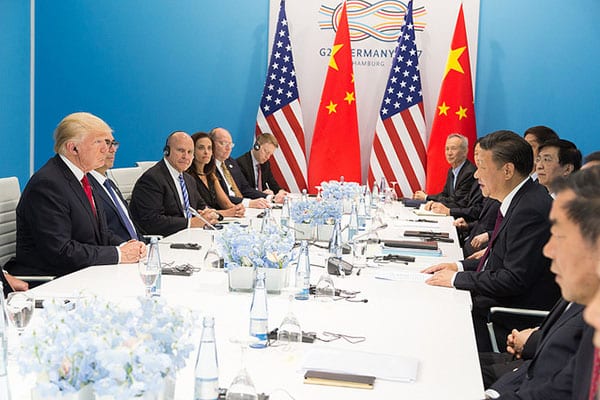
It is not only a question of trade deficits or repatriating companies and jobs to the US. The main and most strategic reason for the war being waged by the Trump Administration on Beijing is not trade but halting, or at least containing, China in its race for technological domination, even though in the process it may destabilise the capitalist-communist regime if it precipitates a significant reduction in its economic growth. This Administration wants to stifle some of China’s possible futures. It knows that China is the only geopolitical and geoeconomic rival that the US has in the 21st century. Will it succeed? It seems unlikely. China is very aware of the attempt but is taking the long view.
One sign that this is the real goal is Washington’s imposition of tariffs on products it does not import, in the aviation industry for instance (where it imports components but not aircraft), as a way of hindering their development. At the same time, by wheeling out the Foreign Investment Risk Review Modernization Act (FIRRMA) and the Committee on Foreign Investments (CFIUS), the US is restricting Chinese take-overs of American tech companies in order to thwart China’s attempts to acquire state of the art know-how. Europe is studying similar measures.
An interesting report from Natixis Asia Research argues that the Administration’s first batch of tariffs on high-end Chinese imports –affecting products worth US$50 billion– was aimed at containing China’s technological progress. This applied to 7% of very high technology and 55% of high technology products. The second batch being implemented now on less technological products worth US$200 billion is aimed at reducing China’s role in the global value chain and ensuring that the US is restored to its former status. It seeks to stifle or at least slow down China’s development. Admittedly, the US has removed certain products from the lists that could have proved damaging to its consumers and manufacturers (such as Apple). The policy has a high degree of precision and, far from being improvised by a lone and fixated US President, benefited from the expert input of the entire Administration. The Chinese retaliation was also precise, because the Asian giant is reluctant to stop importing the things it needs to consolidate its technological ascent in areas such as semi-conductors and artificial intelligence.
Why is it unlikely that the US will fail to attain its goals, which go far beyond rebalancing its trade deficit? First because China is already a tech powerhouse that has made impressive headway in a range of fields. In artificial intelligence, for example, it is at 80% of the US level. President Xi Jinping announced last April his intention of turning his country into a ‘technological superpower’, with a strategy for creating national (and global) champions. This leads to a second consideration: the stability of China is at stake. There is an intricate interdependence between large and not-so-large Chinese enterprises and the Communist Party regime, an interdependence that would need to be severed to satisfy the US, or at least the Trump Administration.
Thirdly, some of this Administration’s measures are also hampering US exports. Outnumbering US companies that export technology to China, however, are those that manufacture there, with double the business in terms of value. China tends to favour investments in its domestic capacity. This is the difference between, for example, ZTE, which found itself on the verge of disappearing due to a US ban on exporting advanced semiconductors to China, and Huawei, which makes its own locally.
Fourthly, China has other markets and networks, whether in Europe, Africa or Latin America, and of course the rest of Asia, especially South Korea, Japan and Taiwan, all places from which the US is distancing itself. Nor should we forget the technological and digital aspects of that vast geopolitical project the New Silk Road (One Belt, One Road), which boasts an African and even a Latin American dimension in addition to the Europe-Asia one.
This latest episode may prompt China to hasten the reduction in its dependence on US technology and replace it with its own by 2025 –the date cited in the ‘Made in China’ strategy that so concerns much of the world–. By then, and it not so far off, major progress will have been made in such fields as artificial intelligence, 5G communication networks, the Internet of things and autonomous vehicles, while robots will play an even greater role. And by 2050?
Of course, if the US, Europe and Japan were to all sign up to this restrictive policy, something that a trilateral meeting in Washington may presage, Chinese interests could be severely damaged. Closer ties with Russia, as exemplified by the meeting between Xi Jinping and Vladimir Putin in Vladivostok, would not make amends. Indeed, the Japanese Prime Minister Shinzō Abe, with a consummate interest in these encounters, was also present in Vladivostok.


